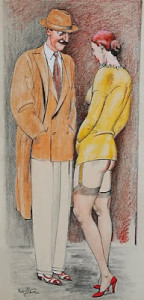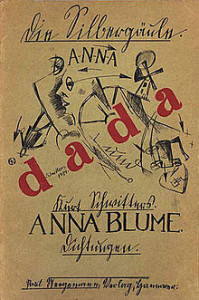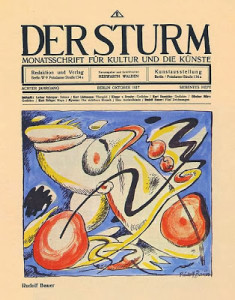
-Marcus Bullock, Emeritus Professor of English at University of Wisconsin
Bauer was an artist who developed and flourished during the Weimar era in Germany. It was a chaotic time, when Berlin was the center of the Universe, as the world capital of modern culture before the rise of Nazism.
Weimar era Germany was the forefront of advanced science, TECHNOLOGY , literature, philosophy and art, with a film industry that rivaled Hollywood. Born out of the ashes of World War I, it was an astonishing and short lived moment of time when technology and modernity were opening all types of possibility for creative and utopian ways of living.
, literature, philosophy and art, with a film industry that rivaled Hollywood. Born out of the ashes of World War I, it was an astonishing and short lived moment of time when technology and modernity were opening all types of possibility for creative and utopian ways of living.
 , literature, philosophy and art, with a film industry that rivaled Hollywood. Born out of the ashes of World War I, it was an astonishing and short lived moment of time when technology and modernity were opening all types of possibility for creative and utopian ways of living.
, literature, philosophy and art, with a film industry that rivaled Hollywood. Born out of the ashes of World War I, it was an astonishing and short lived moment of time when technology and modernity were opening all types of possibility for creative and utopian ways of living.
Expressionist film developed in this era, featuring story’s exploring the darker side of HUMAN nature and surreal dream like aesthetic. They used intricate expressionist design sets, and the style was often nightmarish in atmosphere.
nature and surreal dream like aesthetic. They used intricate expressionist design sets, and the style was often nightmarish in atmosphere.
 nature and surreal dream like aesthetic. They used intricate expressionist design sets, and the style was often nightmarish in atmosphere.
nature and surreal dream like aesthetic. They used intricate expressionist design sets, and the style was often nightmarish in atmosphere.
The Cabinet of Dr. Caligari (1919), directed by Robert Wiene, is often cited as the first German expressionist film. The mise-en-scène show distressed, warped architecture, while the story explores a mysterious, magical cabinet with sinister powers. F. W. Murnau’s interpretation of Dracula, Nosferatu was released in 1922 and remains a classic of the horror genre. Fritz Lang’s Dr. Mabuse the Gambler (1922) was described as “a sinister tale” that portrays “the corruption and social chaos so much in evidence in Berlin and more generally, according to Lang, in Weimar Germany” writes Susan Hayward in Cinema Studies: the Key Concepts.
Futurism is also central to the expressionists, shown corrupted into a force of oppression in the dystopian Metropolis (1927), an early SCIENCE fiction film that remains a foundation for the genre that has influenced generations of filmmakers.
fiction film that remains a foundation for the genre that has influenced generations of filmmakers.
 fiction film that remains a foundation for the genre that has influenced generations of filmmakers.
fiction film that remains a foundation for the genre that has influenced generations of filmmakers.
The Dada short films Ghosts Before Breakfast (1927) and Ballet Mécanique (1924) capture the spirit of the movement perfectly and only take a few moments to view.
Both films are considered masterpieces of early experimental filmmaking. The Dada movement was born out of negative reaction to the horrors of World War I. Dada was created by a group of artists and poets that were part of the collective Cabaret Voltaire in Zurich. Dada rejected reason and logic, prizing nonsense, irrationality and intuition. The origin of the name Dada is unclear; many argue that it is a nonsensical word.
For many participants, the movement was a form of protest against the bourgeois nationalist and colonialist institutions, which Dadaists believed were the cause of the war, and against the cultural and intellectual conformity in art and more broadly in society that went in tandem with World War I. George Grosz later recalled that his Dadaist art was intended as a protest “against this world of mutual destruction.”
During the era of the Weimar Republic, Germany became a center of intellectual thought at its universities, most notably social and political theory (especially Marxism) was combined with Freudian psychoanalysis to form the highly influential discipline of Critical Theory; a discipline that examines politics, sociology, art and culture as an ANALYSIS of the human condition.
of the human condition.
 of the human condition.
of the human condition.
The decadent and modern world of the Weimar Republic was the backdrop for the life and work of Rudolf Bauer. He started his career painting scenes of nightclubs, prostitutes, revelers, dancers and members of high and low society. The Non-Objective art movement began and flourished in this setting, with Bauer becoming the face of the Der Sturm art collective in Berlin. Non-Objective art was highly influenced by the emerging surrealist movement and the rise of TECHNOLOGY .
.
 .
.
The discovery of art from indigenous people from around the world introduced the concept of non-representation to modern artists. Since the Renaissance, European art had been obsessed with capturing realism in a photographic style, with portraits and landscapes dominant. Non-Objective art explored color, design, geometry and TECHNOLOGY in a dream like presence that was totally new and revolutionary.
in a dream like presence that was totally new and revolutionary.
 in a dream like presence that was totally new and revolutionary.
in a dream like presence that was totally new and revolutionary.
Creators were now free to explore images that were non-literal, paintings and sculpture could be open to interpretation from the viewer, encouraging debate and conversation. Bauer was a leader of the movement and Rebay rescued Bauer from the Gestapo to lead the movement in New York City, a refuge for intellectuals, scientists, artists, political and Jewish refugees fleeing the tyranny of the Nazis.


No comments:
Post a Comment